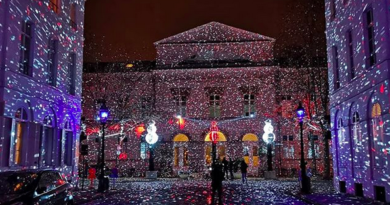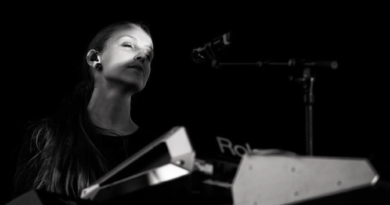Women in Cinema: Elles Tournent Festival
“We believe women currently have a different place in society than men, and so they have a different gaze, yes, a different perception of how the world operates, and this is reflected in their artistic expression. We want to offer a space for women to share their universe,” said Nèle Pigeon, press manager for the Elles Tournent – Dames Draaien Film Festival, which took place at Cinema Vendome and Bozar Centre for Fine Arts, in Brussels from the 25th to the 28th of January.
In its 10th edition, the festival screened more than fifteen full-feature films and several shorts from different countries, all of them directed by women. Out of several submissions, the films are selected based on three criteria: the empowering of women, giving them full agency over their decisions; they have to be moving, and they have to be fun. The festival is made possible thanks to the support of entities such as the French Community Commission (Cocof), the Wallonia-Brussels Federation, the City of Brussels, among others.
This year the festival’s main theme was: Women in Early Cinema, their forgotten story. “If you look at the archives, you can see how many women directors, most of them Jewish, were involved in cinema,” said Sophie Bruneau, film maker and researcher at the ULB, during a talk about women in the film industry. “Then came sound, with its huge need of capital, which was held by men, and women were put aside, figuratively, and in every other possible way.”
One of the many topics discussed was the need to bring women’s stories to the screen. The statistics in Belgium show that at film school, both at bachelor and master’s degree level, about fifty percent of students are women. However, the numbers shift to one side when they leave school. A number of associations (the Society of Drama Authors and Creators, SACD, the association of French-speaking film directors, ARFF, among others) found that in average only 25,5% of directors were women, while 74,5 were men. For film producers, the numbers also showed an imbalance of 10 women for every 31 men. And when it came to the amount of money allocated to projects by women, the proportion was of 32%, while 68% was allocated to projects by men (Service Général de l’Audiovisuel et des Médias, SGAM).
“I think one of the critical issues is to find out why we receive so few proposals from women,” said Ines Rabadan, film director, member of the Selection Committee for the Film Fund of the Wallonia-Brussels Federation, and of the Belgian Committee of the SACD. “Whenever I see these numbers I picture a woman thinking, ‘This is a lot of money. Most likely this is not the kind of application for me.’ And this is something that needs to change, the perception that they have of themselves.”
Hadja Lahbib, journalist and TV presenter, talked about her experience juggling responsibilities between her career and taking care of her young children. “You see it most clearly when a couple goes through a divorce, how the career of a woman is shattered because she takes care of most of the child-rearing responsibilities. And yes, women need to believe more in themselves. I see it at work. Men don’t hesitate when asked to come for a twenty-minute interview. Women go, ‘Me? Twenty minutes? What will I say?’ Coaching them to have more confidence in themselves would take us a long way.”
Some of the topics that seem to interest women directors around the world are: questioning maternity and the choice to have children (Siberian Love; Maman Non Merci); women and politics (Dil Leyla; Hooligan Sparrow); reproductive rights (The Art of Loving); professional fulfillment (Les Filles; Martha & Niki; Ouaga Girls; Men Show Their Movies Women Show Their Breasts).
The festival highlighted the need in cinema, as well as in every other aspect of life, to promote a wider diversity of stories. “That’s what Anna Serner did in Sweden,” said Rabadan. “She thought out of the box and expanded the criteria for film selection. She gave a higher importance to originality, and when that happened, more stories by women came to see the light. And why? Because those are stories we haven’t yet heard of.”
Good to Know:



